The Critical Root Zone

NPS Image
Cherry trees, like all living things, need specific conditions to live. The roots are how the trees absorb water and nutrients. The critical root zone is the area under the earth that contains the majority of the tree’s roots. Healthy trees require healthy roots, and healthy soil. The soil around the roots needs to be able to retain moisture and have the right communities of insects and beneficial fungi.
At the top, text says: "Protecting the Critical Root Zone: What Does the Mulch Do?"
In the center of the image, a pink blooming cherry tree by the Tidal Basin is shown in a cross-section, showing the above ground view as well as roots and soil below ground level. The roots are traced in a box at the width of the tree canopy and labeled "Critical Root Zone."
Around the frame there are five text and image pairs.
"Retains water to hydrate soil," is written next to icons of rain.
"Encourages healthy bug populations," is written next to an icon of a bug.
"Fosters symbiotic fungi," is written next to an icon of a microscope.
"Fences hold mulch in place," is written next to an icon of a fence.
"Protects roots from sun-baking," is written next to an icon of the sun.
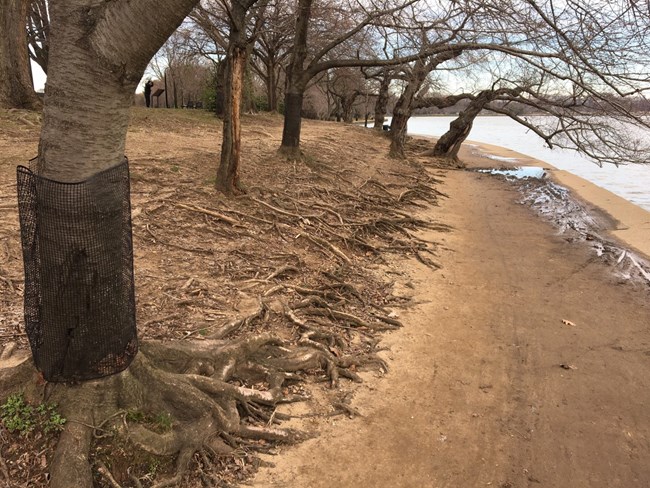
NPS Photo
Prior to the blanket of wood chips, the roots of the cherry trees around the Tidal Basin were struggling with their environment.
The soil was sunbaked and compacted around the ever-expanding roots and root mats of the cherry trees. The compacted soil could not hold water. The insects necessary for soil health were missing. The imbalanced soil could not support the Mycorrhizae.
Mycorrhizae (meaning “fungus root”) are a symbiotic relationship between particular types of fungi and the roots of the vast majority of plant species that grow on land.
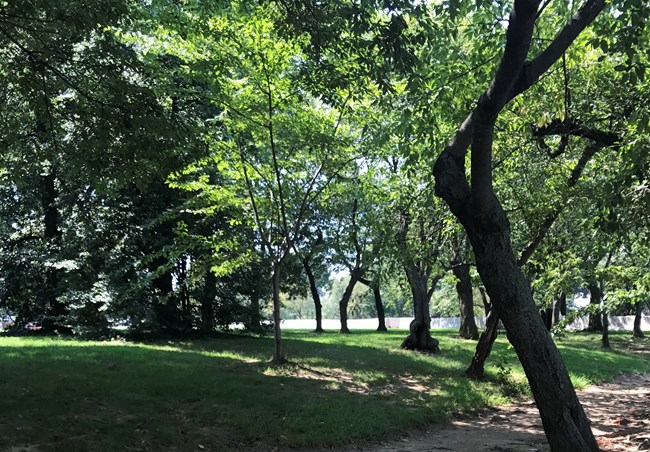
NPS Photo
In healthy soil, a dense network of root extensions grow and help the plant absorb water, become more resistant to disease, and keep the soil balanced. In return, the plant offers the fungi carbohydrates from photosynthesis.
With high use and without the wood chips, all of these healthy features of soil health were damaged. The soil and roots couldn't sustain the cherry trees' normal growth, health, and vigor.
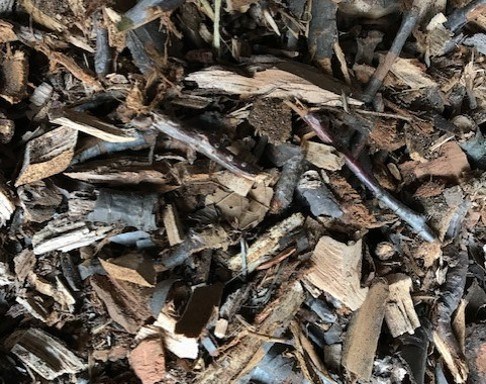
NPS Photo
The wood chip therapy is undoing these negative effects.
The wood chip cover provides a sunshade.
The insect communities are returning, burrowing through the soil and opening pockets in the soil that hold air and retain water.
The Mycorrhizae are growing again, supporting the health of the trees and improving the health of the surrounding soil.
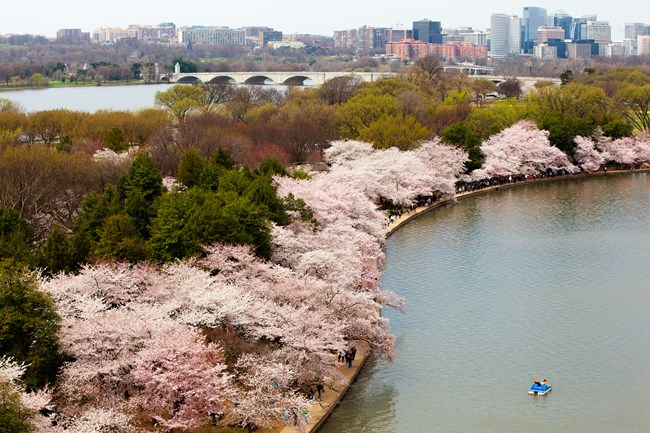
NPS Photo, Rachel Hendrix
By working with natural processes, the wood chip therapy is helping the cherry trees grow healthy again.
Roots and soil communities are growing stronger and healthier.
If you see wood chips and a fence around a cherry tree, the fence is there to hold the wood chips in place and help the cherry trees thrive.
(The wood chips used here are local. Often we are able to make them as a by-product of other tree care work. This helps lower our carbon footprint!)
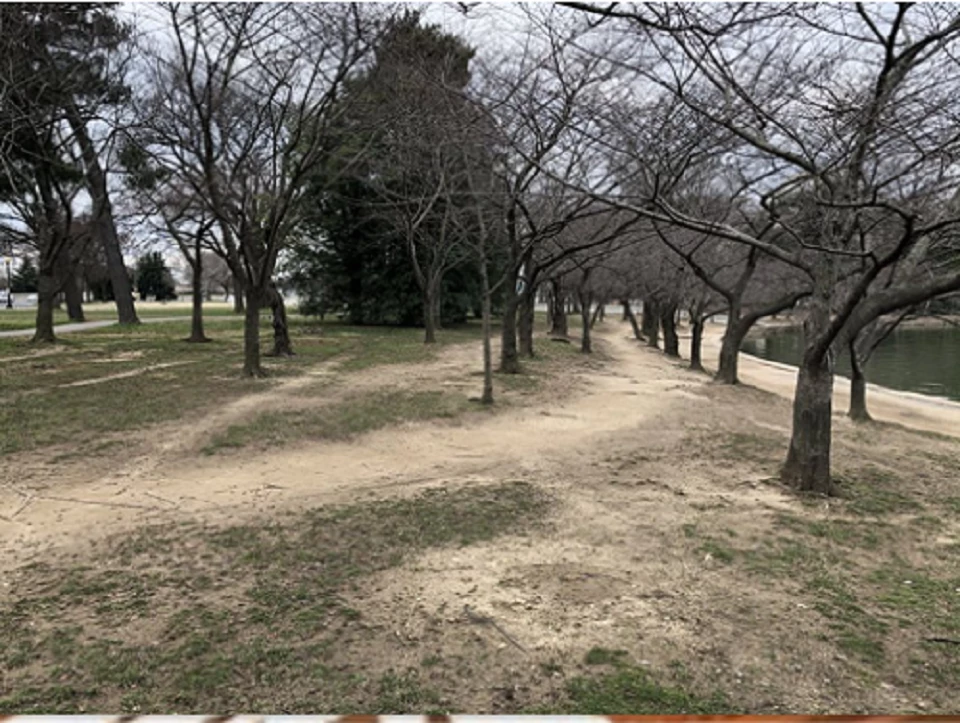
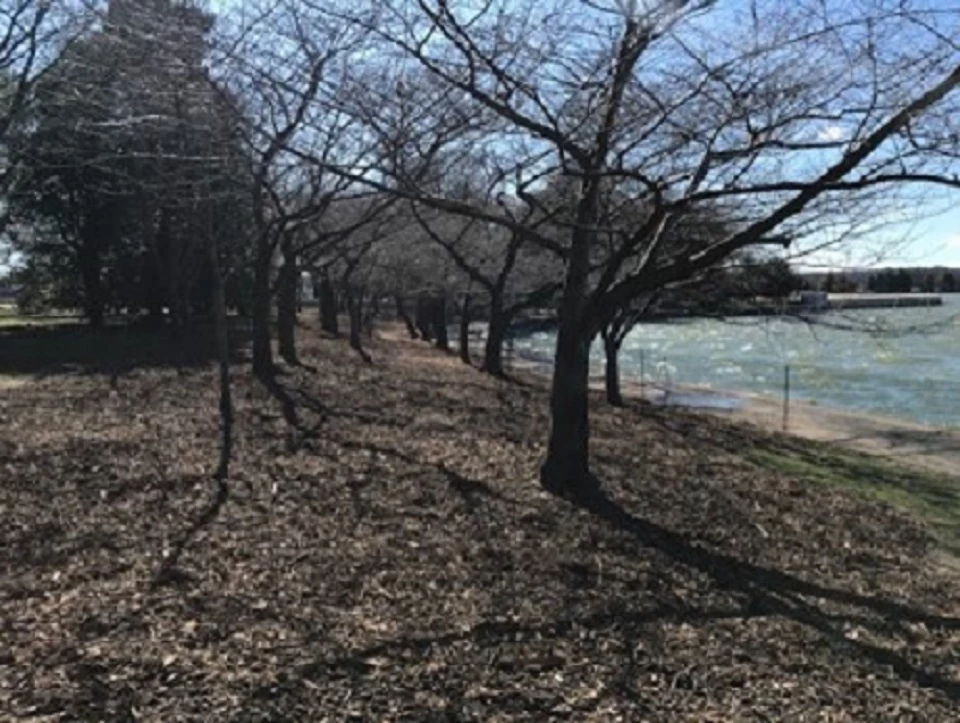
Left image
Credit: NPS Photo
Right image
Credit: NPS Photo
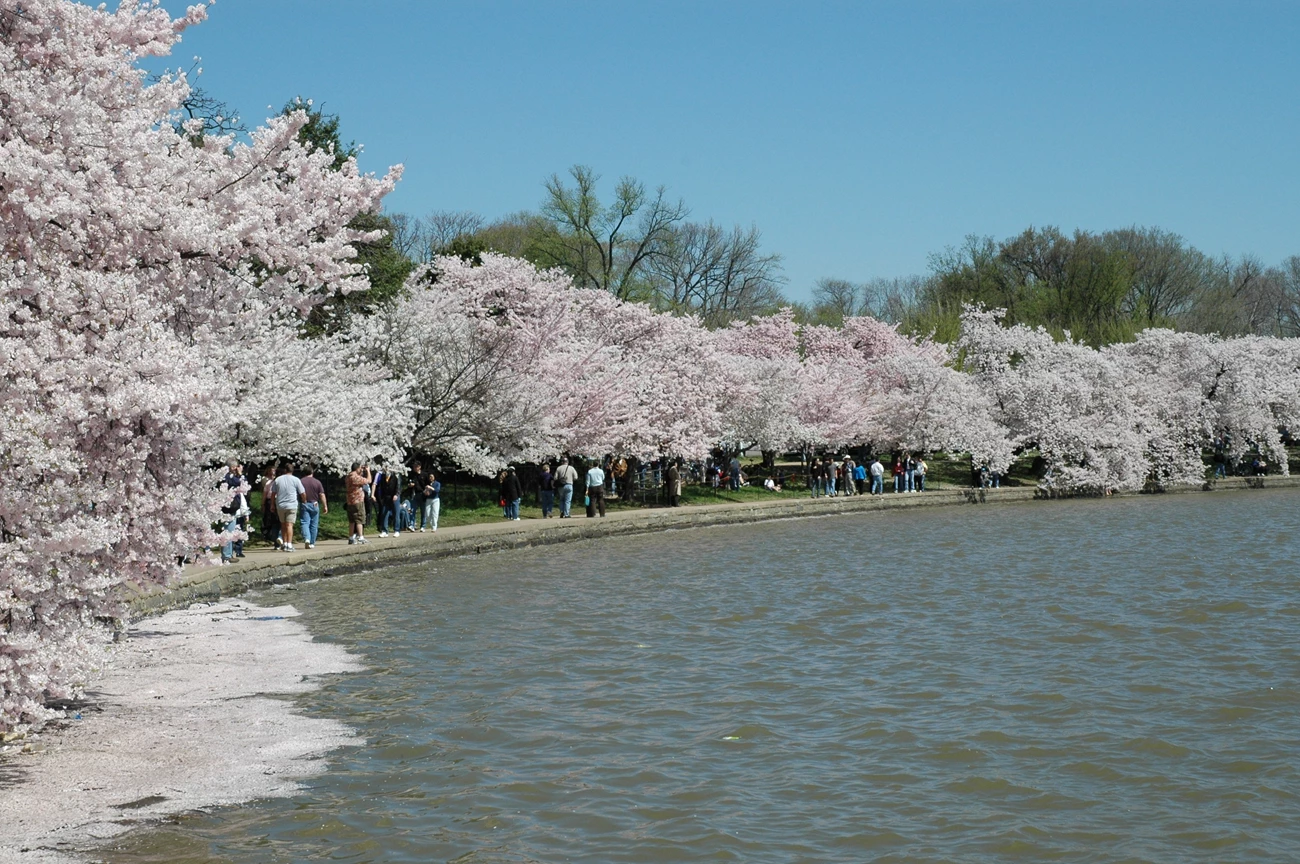
NPS Photo
Maintenance of the Japanese Flowering Cherry Trees
For the most part, the care of the Japanese flowering cherries have been entrusted to the members of the Tree Crew for National Mall and Memorial Parks. The Tree Crew members are professional arborists who have experience and training to care for the trees. Their sense of professionalism and dedication is the single most important factor in the success and continued survival of the flowering cherry trees.
Let's look at some of the common maintenance tasks performed!
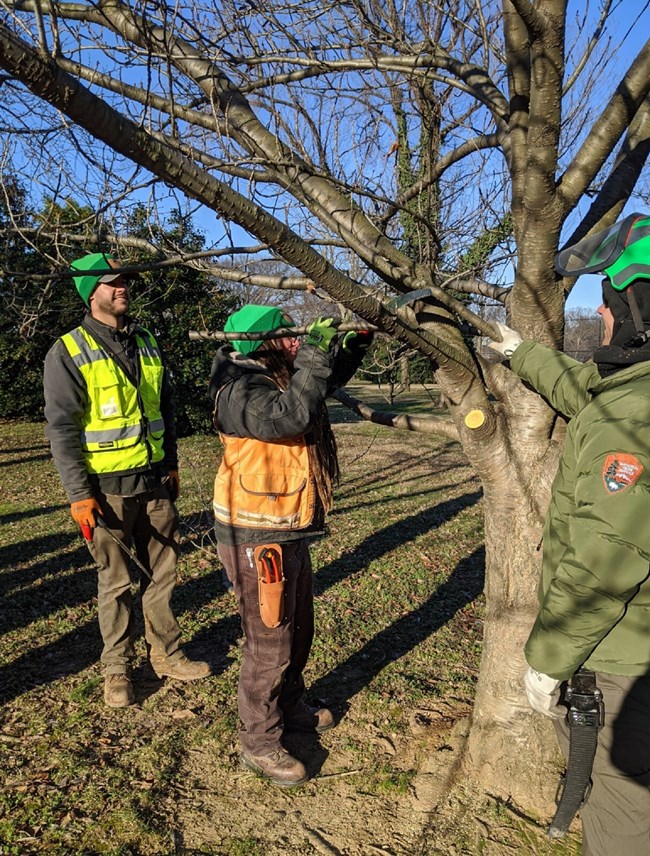
NPS Photo
Pruning
This is the single most important task that contributes to the overall health and appearance of the trees. Pruning is conducted one to two times each year. The most significant pruning is done from January - early March.
Newly Planted Trees (3-6 years after planting): At the time of selection, the spacing between primary scaffold limbs is approximately six to eight inches, with permanent lateral branches at least two feet out from the trunk. The size of the selected limbs at their point of attachment is approximately one half or less the diameter of the trunk or parent branch.
Mature Established Trees: The objective is to maintain a sound scaffold branching system by selective thinning of branches and removal of dead, interfering, split, broken, diseased and large branches with narrow angles of attachment. This ensures the development of a sound scaffold branch system. No more than one-fourth of the foliage is be removed during a single pruning operation. Upon completion, one-half of the remaining foliage is on branches that originate in the lower two-thirds of the tree. The use of power saws is limited to branches greater than two inches in diameter. Branches less than two inches in diameter are removed using hand saws or scissor type pruners or loppers. Cut back to a lateral one-third of the diameter of the branch at its point of origin. The final cut is made sufficiently close to the trunk at a 45 degree angle, without cutting into the bark branch ridge or branch collar or leaving a protruding stub.
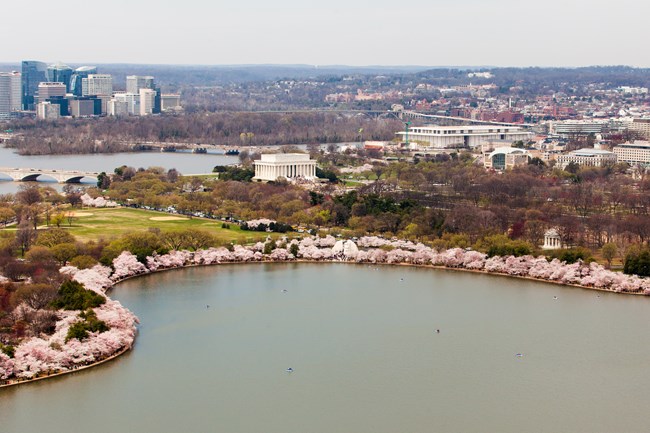
NPS Photo, Rachel Hendrix
Watering
Watering is performed on one to three year old trees as needed using water trucks.
Established trees are irrigated during period of prolonged drought with water from the Potomac River or Tidal Basin.
This water is conducted by operating large water pumps and an irrigation pipe approximately a quarter mile in length with sprinklers set every 60 feet.
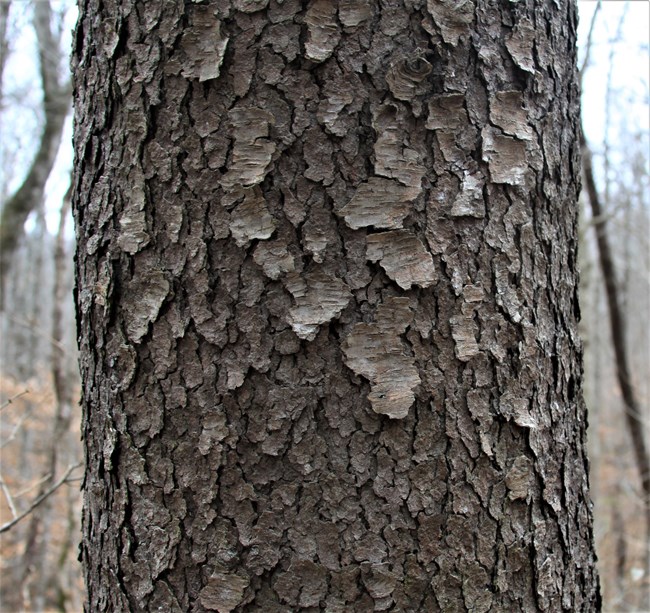
NPS Photo
Wound Treatment
Bark tracing is performed when the bark has been damaged and there is an open wound.
When repairing bark wounds, only damaged or loose bark is removed to minimize the disturbance to live plant tissue.
Wound paints are no longer used, as they have not been shown to be effective in preventing or reducing decay, preventing disease, or preventing insect infestations.
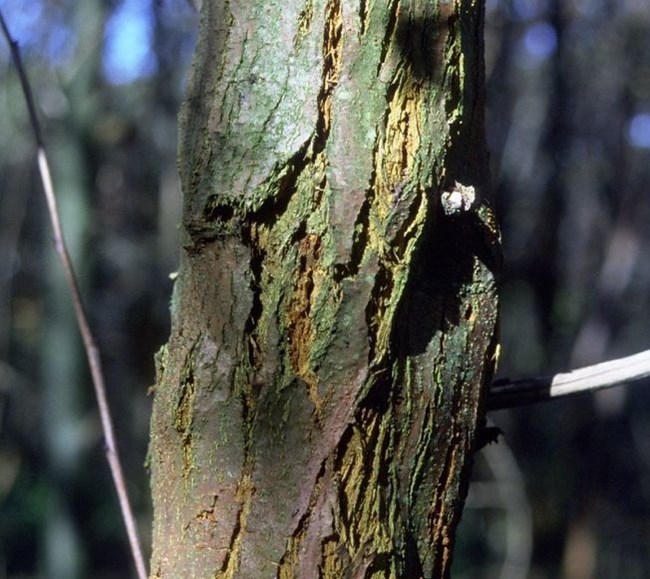
NPS Photo
Insect and Disease Control
The trees are monitored for insects and diseases under an Integrated Pest Management Program. Like all plants, cherry trees have insect and disease associates, but there are none that are seriously threatening the trees presently.
The trees are sprayed with a horticultural oil only when populations reach set threshold levels. The most common insect is scale. Bacterial canker on the branches or trunk causes lesions which ooze gum (bacterial gummosis). This is common but rarely serious problem on established trees. It is controlled through pruning and wound treatments (bark tracing). Cherry Leaf Spot is controlled through cleaning leaf debris.
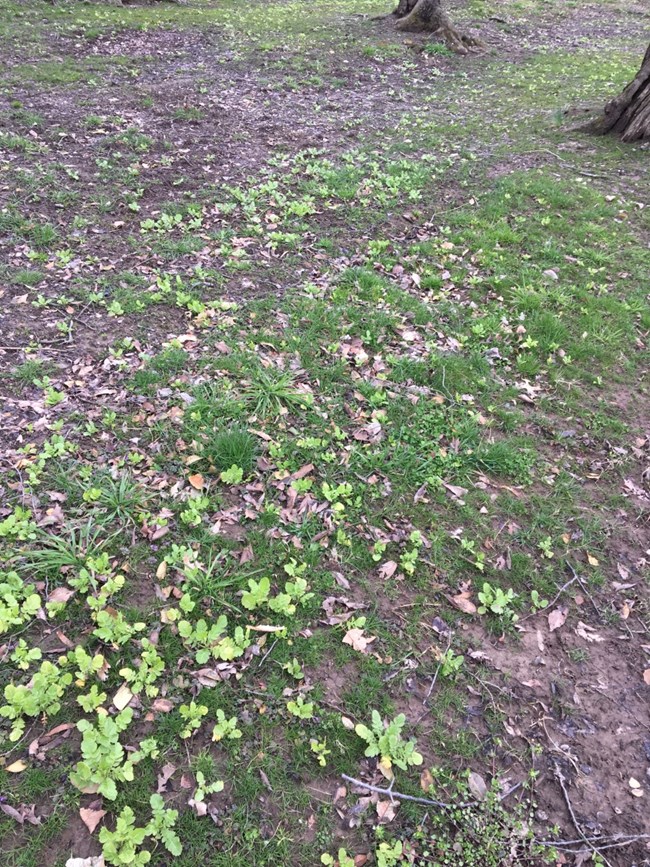
NPS Photo
Fertilization
In 1998, mycorrhizal fungi, root bio-stimulants, and growth promoting bacteria were added to the fertilizer solution. This was designed to help the cherries overcome stress from low soil fertility, drought, temperature extremes, and overuse impacts.
Now, the cherry trees are only fertilized to correct or prevent nutrient deficiencies. We apply a slow release fertilizer specifically formulated for trees.
The fertilizer is injected into the soil, 4 to 8 inches deep. It takes 200 pounds of pressure per square inch (about twice the pressure in a road bike tire) to inject the fertilizer into the soil. Two pounds of nitrogen are added per 1000 square feet of soil.
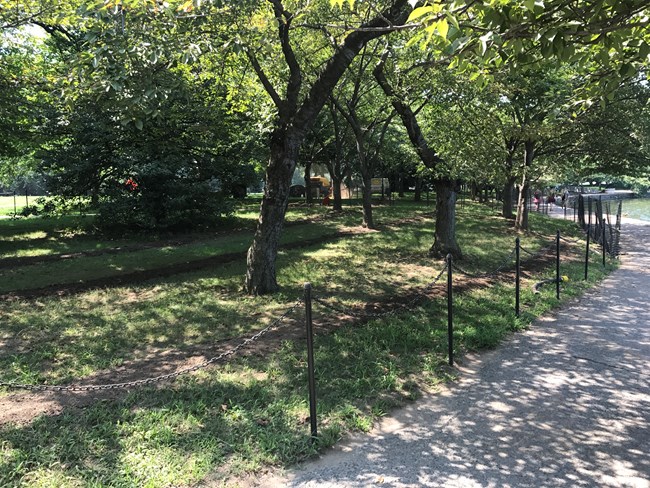
NPS Photo
Aeration — Vertical Mulching
Soil needs to be aerated (have air pockets) to be healthy. The aerating (or vertical mulching) procedure adds air pockets baack into compacted soil.
A highly focused supersonic air stream moves at approximately 1,300 mph to separate soil from tree roots.
The aeration creates trenches that resembles the spokes on a bicycle wheel.
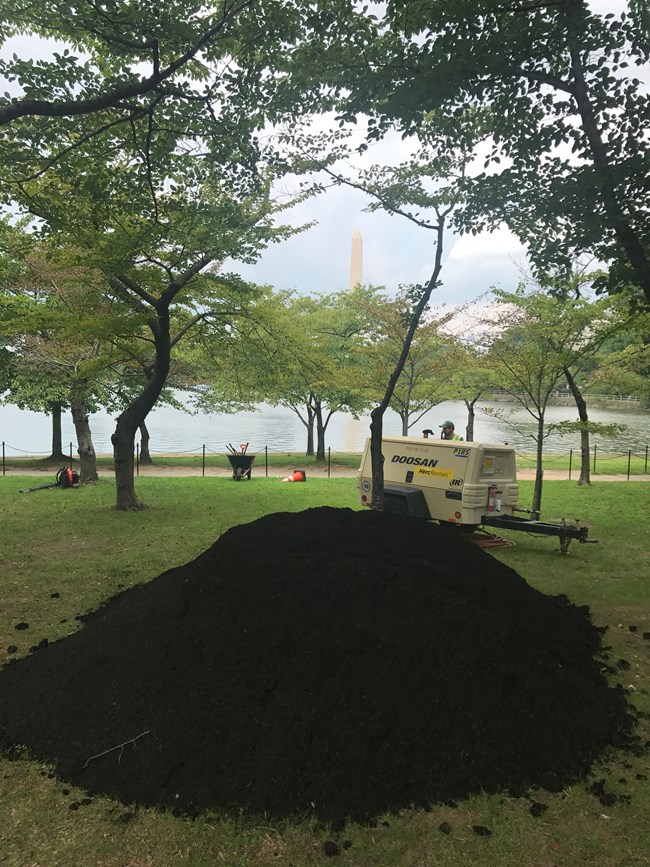
NPS Photo
The trenches are backfilled with a mix of one-third each of sandy loam topsoil, shale or slate, and composted leaf mold.
When soils are compacted, almost all of the soil characteristics the trees need are negatively affected. Specifically, these are structure, tilth, oxygen/carbon dioxide balance, soil microbiology, total and capillary spore space, water infiltration, and water holding capacity.
Combined with protecting the critical root zone, aeration and vertical mulching can help restore soil health after compaction.
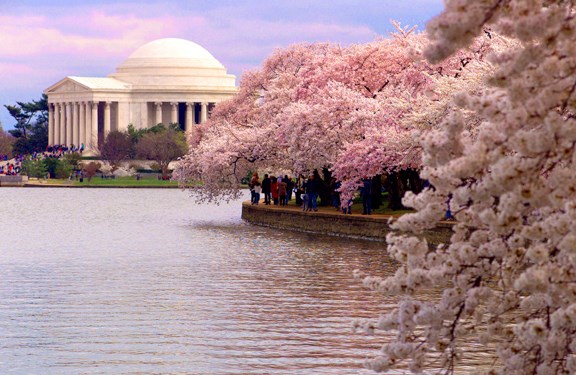
NPS Photo
Replacement
All cherry trees in the park are tagged, mapped, and inventoried. Trees that die due to old age, anaerobic soil conditions (low oxygen due to flooding from the Tidal Basin and Potomac River), impacts from heavy foot traffic, or insect and disease infestations are replaced with trees purchased from commercial nurseries during the next planting season (November 1 - November 30 and March 15- April 15).
The National Park Service promotes public participation in perpetuating the cherries through The National Capital Region Cherry Tree Maintenance Fund.
The fund was established in 2003 to provide private citizens and public-spirited organizations the opportunity to donate funds for the replacement and maintenance of the cherry trees. As an endowment fund, only income can be dispersed. The principle remains intact. The goal of the fund is to provide reliable funds on an annual basis, in perpetuity, for the replacement and maintenance of the cherry trees.
Last updated: March 9, 2021
